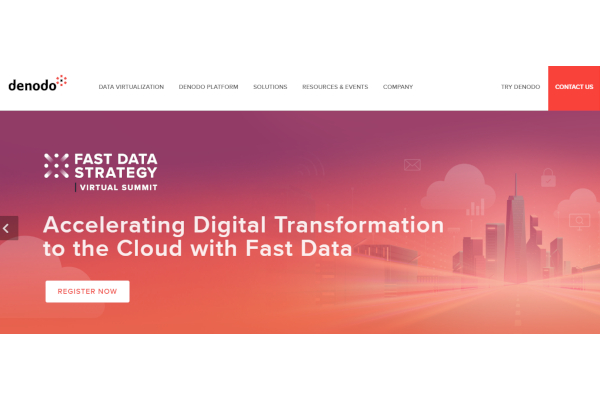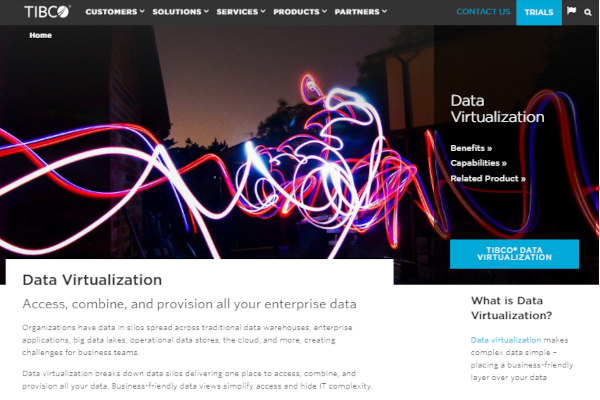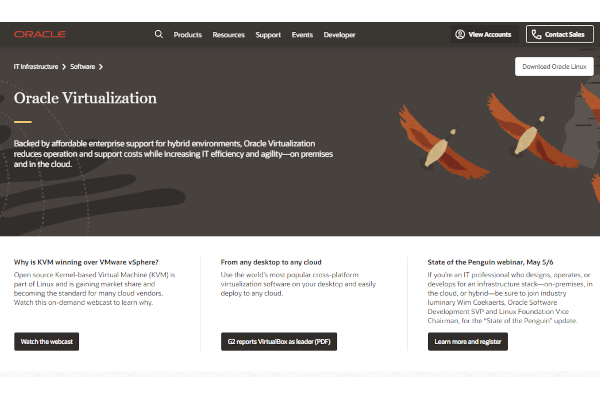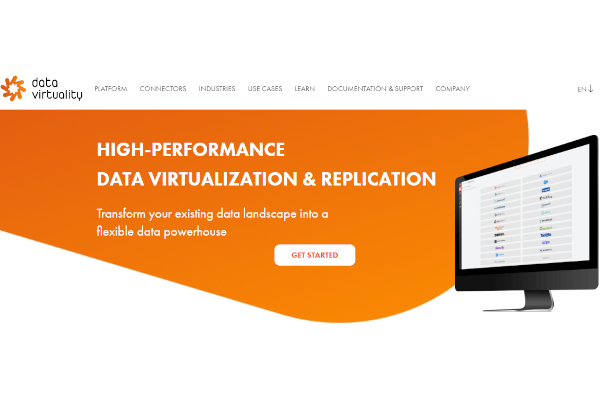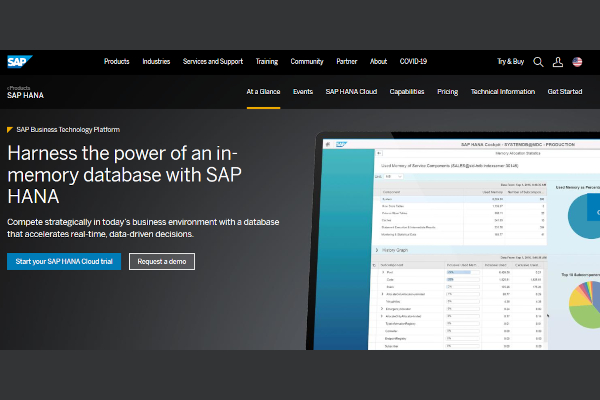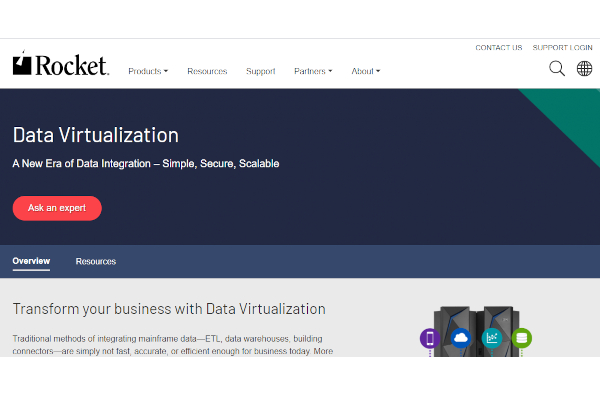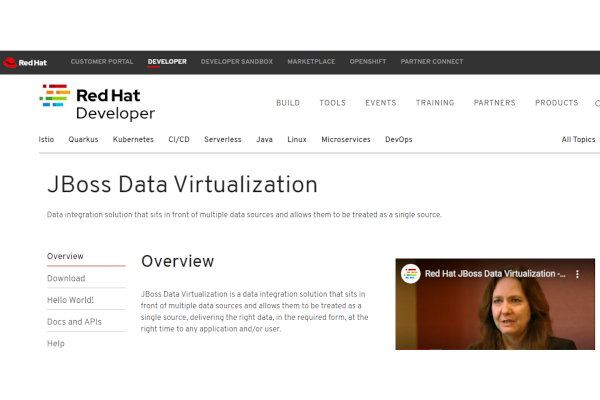Organizations who want to jumpstart their data discovery programs are turning to data virtualization software. Companies desire the opportunity to achieve a single view of their data without having to transfer it, as modern, distributed analytics solutions become the new standard. Users can also make real-time improvements to data sets without disrupting the data as it is physically stored, enabling them to incorporate data sources easily.
11+ Data Virtualization Software
1. Denodo
2. Informatica Data Virtualization
3. AWS
4. Tibco Data virtualization
5. Oracle Data Virtualization
6. Data Virtuality
7. IBM data virtualization
8. SAP HANA
9. Stone Bond
10. Rocket software
11. Actifio
12. JBoss Data Virtualization
What is Data Virtualization?
Data virtualization software serves as a link between various, disparate data sources, bringing vital decision-making data into a single virtual location to data analytics. Data virtualization is a modern data layer that allows users to access, merge, transform, and deliver datasets at unprecedented speed and cost. Users can quickly access data stored across the enterprise, including conventional databases and significant data sources.
How to Have a Successful Data Virtualization?
When data virtualization is implemented without being careful, it can pose problems in manageability, accessibility, data quality, and efficiency. Without a cautious eye on data architecture and governance, such innovations will spread unchecked data until organizations begin to doubt the accuracy of their data and spend a significant amount of time addressing differences between sources. A company can expose departmental data assets to a far wider audience than ever before through data virtualization. We are required to think about data virtualization from an enterprise perspective for this and other reasons. Here are some steps on how to have a successful data virtualization.
1. Work with the Data Governance company to make sure everything is in order.
Suppose you already have a data governance organization (formal or informal). In that case, it’s a good idea to socialize data virtualization principles and capabilities before you get started so that you can take advantage of any existing standards, procedures, data descriptions, and business rules. Data virtualization should be deployed with the support of such an entity and regulated as a data asset since it provides a portal into corporate data assets.
2. Create usage guidelines and provide training to development teams.
Organizations will be wise to develop guidelines for when data virtualization technology can be used versus conventional approaches for data access. One rational approach is to begin the first data virtualization project by leveraging tool-specific best practices, then gradually adapt the approach to best fit the organization’s needs over time. Data developers should be aware of data virtualization capabilities and, in many situations, should have a basic understanding of the technology. Any data creation project should take virtualization into account. At the very least, planning should consider exposing new data assets through the data virtualization platform.
3. Determine each organization’s obligations.
Organizations also fail to decide who is responsible for promoting data virtualization because it allows them to deploy online services, query operating processes, and provide integrated data for review. For such a matrixed strategy, identifying one party with primary ownership and responsibility for the data virtualization software administration is beneficial. It’s also a good idea to assign primary responsibility for data virtualization to a single community.
4. Users should be able to see metadata.
Data lineage information can be displayed and exported in most data virtualization tools. When data engineers and business users need to know where a particular piece of data is originated from, this can be incredibly helpful. This type of lineage data is an essential piece of metadata that can be useful to a company.
FAQs
What is the significance of data virtualization?
Data virtualization capacity provides IT departments with many advantages to incorporate technology in their core corporate strategy. Integrated data views draw without transferring or replicating different sources, bypass duplicate copies, and reduce stock footprints.
What exactly is big data virtualization?
The process of building virtual environments for large data systems is known as extensive data virtualization. Big data virtualization benefits businesses and other parties because it allows them to leverage all of the data assets they obtain to accomplish different strategic plans.
What is data fabric?
Data fabric is a collection of data services that provide consistent functionality across various endpoints in on-premises and cloud environments. To drive digital transformation, Data Fabric simplifies and incorporates data management across cloud and on-premises environments.
The need for Data Virtualization becomes more apparent as we progress deeper into the technological era of global systems. From load cells to flow meters to linear actuators, access to information across networks, languages, and storage types can result in a quicker and more helpful data transmission that anyone can use across various industries and manufacturers.
Related Posts
10+ Best Chemical Software for Windows, Mac, Android 2022
12+ Best Vulnerability Scanner Software for Windows, Mac, Android 2022
4+ Best Bundled Pay Management Software for Windows, Mac, Android 2022
10+ Best Trust Accounting Software for Windows, Mac, Android 2022
10+ Best Patient Portal Software for Windows, Mac, Android 2022
13+ Best Virtual Reality (VR) Software for Windows, Mac, Android 2022
12+ Best Bed and Breakfast Software for Windows, Mac, Android 2022
15+ Best Resort Management Software for Windows, Mac, Android 2022
14+ Best Hotel Channel Management Software for Windows, Mac, Android 2022
12+ Best Social Media Monitoring Software for Windows, Mac, Android 2022
10+ Best Transport Management Software for Windows, Mac, Android 2022
10+ Best Other Marketing Software for Windows, Mac, Android 2022
10+ Best Top Sales Enablement Software for Windows, Mac, Android 2022
8+ Best Industry Business Intelligence Software for Windows, Mac, Android 2022
10+ Best Insurance Agency Software for Windows, Mac, Android 2022

